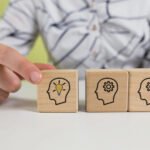Optimize your marketing funnel by aligning audience building, email marketing, digital ads, and sales for seamless customer journeys and revenue growth.
Table of Contents
1. Understanding the marketing funnel
2. Audience Building: The Foundation
3. Email Marketing: Nurturing Leads
4. Digital Advertising: Driving Traffic and Conversions
5. Sales Enablement: Converting Leads into Customers
6. Integration and alignment for optimal results
7. Conversion Rate Optimization (CRO)
8. Measuring Success and Revenue Growth
9. Parting thoughts
In the large universe of a digital marketing process, channel optimization is as critical as tuning only a well-organized orchestra. Every audience development, every email, display, digital, and sales support has to act in concert to produce a melody that takes potential customers from awareness to loyalty. So, let’s go through the basic supply chain funnel and discuss how the alignment of its components can lead to significant growth.
1. Understanding the marketing funnel
The marketing funnel is a structure that describes the process of the customer’s decision-making before buying something. It comprises six stages:
- Awareness: It is the first level of the funnel where potential customers come across your brand.
- Interest: The stage where the prospect is in a transition or beginning to develop an interest in your products or services.
- Consideration: Customers and individuals carrying out market research assess your products or services in relation to competitors.
- Intent: Prospects show they have intent to buy something.
- Purchase: It is the phase that results in conversion of the prospect into a customer.
- Lastly, post-purchase, where your objectives are to ensure repeat business from the customers.
Every level plays an important role in the development of the customer relationship and passes from one level to another.
2. Audience Building: The Foundation
Demographics are the foundation of any marketing decision. It is impossible to devise a successful marketing campaign if you do not know who your target population is. With the help of the customer segmentation concept and calculation of the various parameters for each group, you can use proper tools and methods to satisfy customers’ needs. Effective audience-building strategies include:
- Content Marketing: Developing quality content for potential customers to draw their attention to and make them interested.
- Social Media Engagement: Engaging customers through social media to converse and expand your audience.
- SEO and Organic Traffic: Maximizing the probabilities of targeting and reaching out to potential consumer bases without incurring costs.
These strategies help in targeting the right audience in your marketing so that you are reaching the right audience that is most likely to buy.
3. Email Marketing: Nurturing Leads
Email marketing is one of the most essential marketing strategies for the transition of leads from one state to another in the funnel. Best practices in email marketing involve: Best practices in email marketing involve:
- Personalization and Segmentation: Segmentation and personalization that means sending different e-mails to different people, disclosing preferences and behavior.
- Automated drip campaigns: creating targeted follow-up emails and using delay techniques to move leads through a nurturing cycle.
- A/B Testing for Optimization: Ongoing experimentation with various aspects of the emails in order to have gains in the various aspects that constitute emails.
4. Digital Advertising: Driving Traffic and Conversions
As part of web promotion, digital advertising includes PPC, display ads, and social media ads. To maximize their effectiveness, align your ad strategies with the funnel stages:
- Targeted advertising: reaching specific target markets with specific messages.
- Retargeting Campaigns: targeting the individuals who have previously shown interest in your brand but did not make a purchase.
Analysis of the outcomes is important, especially with regard to ad performance. Evaluating various results and ad schedule insights, basic and enhanced key metrics and KPIs, and at the same time, the attribution modeling enables you to comprehend the overall influence of the ads and the prospects for optimization.
5. Sales Enablement: Converting Leads into Customers
Sales enablement bridges the gap between marketing and sales, ensuring that leads are effectively converted into customers. This involves:
- Aligning Sales and Marketing Efforts: Making sure that the cross-over of both teams is properly aligned with the organization’s goals.
- Tools and Techniques for Sales Enablement: Leveraging the CRM systems, offering your SA resources, and creating awareness among the sales force.
- Effective Communication Strategies: Applying the lead scoring and follow-up strategy to sort and interact with the leads.
The coordination of sales and marketing teams results in the smooth transition from lead nurturing to the conversion process.
6. Integration and alignment for optimal results
Integrated marketing makes certain that a company’s image, message, and other media communications are consistent throughout. Thus, with the help of effective marketing technology solutions, including marketing automation systems and data.
The ability to combine all the integration tools is crucial for the achievement of this alignment. Successful funnel integration involves:
- Seamless Customer Experience: Ensuring that we give a consistent and individualized touch point experience across the various touch points.
- Data Integration and Analytics: As the primary element of a data-driven process, evidence-based decision-making is an approach ensuring strategic planning and strategy improvement through the usage of data.
7. Conversion Rate Optimization (CRO)
Normally, Conversion rate optimization is centered on the percentage of the users that make the required action. Techniques include:
- Landing Page Optimization: Optimizing various landing pages with the aim of augmenting of the conversion rates.
- A/B Testing and Multivariate Testing: Struggle of changing different parameters to find out that which combination yield the best results.
- Continuous Improvement Strategies: Measuring consumers’ actions and evaluating their responses to Course creation plans, hence initiating and incorporating feedback.
CRO is ongoing and a process that must be followed for the greatest efficiency of the funnel.
8. Measuring Success and Revenue Growth
As a result of your funnel optimization, monitor important metrics like conversion rates, the customer cost of acquisition as well as the customer lifetime value. The use of data is very essential for any decision-making process since tracking and forecasting leads to the improvement of a company’s action plans in advance..
9. Parting thoughts
Marketing funnel optimization is not just a tactic for audience building, email nurture, digital advertising, and sales rollout; it is a process of turning the customer experience journey into a coherent and streamlined one. Thus, knowing the tendencies in each stage of the funnel and using the methodologies of integrated marketing communication, you are able to achieve substantial revenue growth and develop long-term cooperation with your clients. To cut a long story short, embrace the power of alignment, and the marketing of your business becomes a harmonious production that can make even the most disastrous campaigns successful.
Visit Our SalesMarkBlog Section to Uncover the Sales Strategies That Ignite Your Sales Journey!





